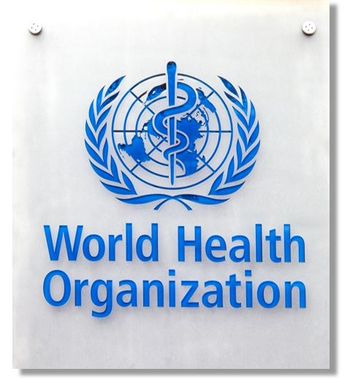
Lengthy Travel by Any Means Increases Clot Risk
LEIDEN, The Netherlands -- Whether by road, rail, or air, travel for more than four hours caused a two-fold increase in the risk of deep-vein thrombosis, researchers here reported.
LEIDEN, The Netherlands, Aug. 22 -- Whether by road, rail, or air, travel for more than four hours caused a two-fold increase in the risk of deep-vein thrombosis, researchers here reported.
Although this moderate overall increased risk held for all travelers and for all means of travel, for certain subgroups, the risks were considerably higher, said Frits Rosendaal, M.D., of Leiden University here, and colleagues.
These higher-risk travelers included those with a mutation in a blood-clotting gene (factor V Leiden), and those who were obese, taller than six feet, three inches, or shorter than five feet, three inches, and those who used oral contraceptives, they reported in the August PloS Medicine.
The findings came from an ongoing case-control study (the MEGA study) begun in 1999 of risk factors for venous thrombosis. Subjects came from an unselected population of 1,906 patients in The Netherlands, younger than 70, who had a first thrombosis.
The participants' partners who did not have a thrombosis served as matched controls. To do this, the researchers had to adjust for differences between the cases and the controls, including the fact that the partners generally were of the opposite sex.
Of the DVT patients, 233 (12%) had traveled for more than four hours in the eight-week period preceding the event compared with 182 (9.5%) of the controls. However, as cases and controls were selected as couples (matched pairs), they often traveled together leading to some uninformative pairs. Therefore, only 145 pairs could be used for the matched analysis.
Traveling in general was found to double the risk of venous thrombosis (odds ratio 2.1; 95% confidence interval 1.5-3.0). The risk was highest in the first week after traveling, after which the rate gradually decreased, the researchers reported.
The overall risk of flying (OR 1.7, CI 1.0-3.1) was similar to the risks of traveling by car, bus, or train, which also were similar to one another, the researchers reported.
For individuals in certain subgroups, the risks were considerably higher, the researchers said. For those with factor V Leiden who traveled by bus, car, or train (the modes combined) compared with non-carriers who did not travel, the risk was eight times greater (OR 8.1, CI 2.7-24.7). The risk was still higher (OR 13.6, CI 2.9-64.2) for the combined effect of air travel and factor V Leiden.
For those who used oral contraceptives and traveled by car, bus or train, the estimated increased risk was more than 20-fold, and an estimation of the risk for women who traveled by air was about 40 times greater, the investigators wrote.
Weight and height were also factors. The investigators reported a 10-fold increased risk (OR 9.9; CI 3.6-27.6) for obese individuals (BMI greater than 30 kg/m2).
Compared with those of average height (five feet, three inches to six feet, three inches), the risk for those taller than six feet, three inches was almost five times greater (OR 4.7; 95% CI 1.4-15.4). However, there was also a suggestion of increased risk for short people who traveled by air (OR 4.9, CI 0.9-25.6; did not reach usual level of statistical significance), the researchers reported.
As possible mechanisms for an extra risk during flying, an effect of hypobaric hypoxia on the coagulation system had been postulated, but with unclear results, Dr. Rosendaal said. "Our study showed an increased risk in all types of travel, which suggests that the increased flying risk is caused mainly by immobilization. Additionally, he said, the risk is further increased in short and tall people who are likely to experience more immobilization and venous compression than other travelers.
Nevertheless, the researchers conceded, because some of their findings were more pronounced for air travel, they could not exclude an additional effect of hypobaric hypoxia.
The finding of an increased risk for taller and shorter people should be interpreted with caution as the numbers were small in these groups, the researchers said. Still, they wrote, it is possible that tall people are subjected to even more cramped seating, and that short people's feet may not touch the floor, leading to extra compression of the popliteal veins. Interestingly, they added, seats in cars are generally lower and more adjustable than those in airplanes.
Many questions were left unanswered, the researchers said. For example, the results applied only to patients younger than 70. Also, it is likely that other characteristics, now being studied by a World Health Organization group, also increase the risk. These include drug use, sleeping pills, alcohol use, and flight-specific (class or seating) factors.
The number of cases in each group was relatively low, the researchers emphasized, and the overall risk of thrombosis was low. However, the risk was considerably higher for individuals who use oral contraceptives, those who carry the factor V Leiden mutation, and those who are particularly tall, short, or obese. This heightened risk suggests that studies into the efficacy of prophylactic measures are required, Dr. Rosendaal's team wrote.
Newsletter
Enhance your clinical practice with the Patient Care newsletter, offering the latest evidence-based guidelines, diagnostic insights, and treatment strategies for primary care physicians.

















































































































































































































































































